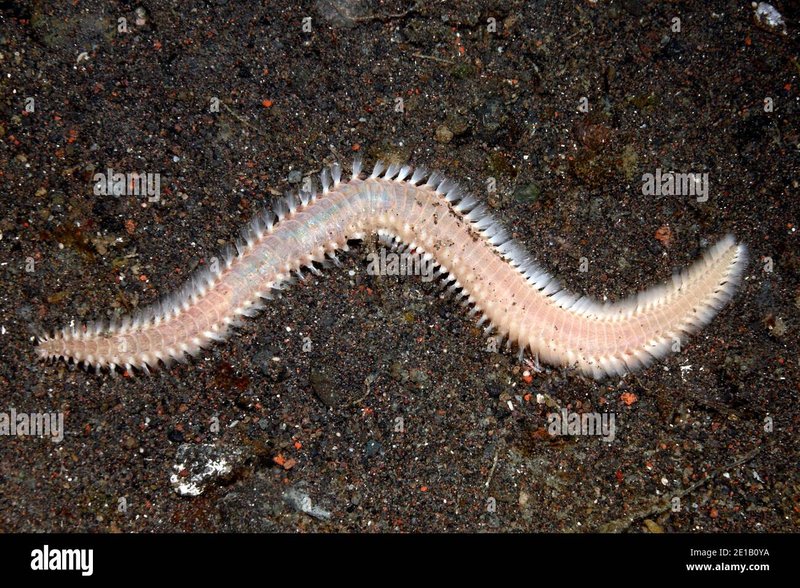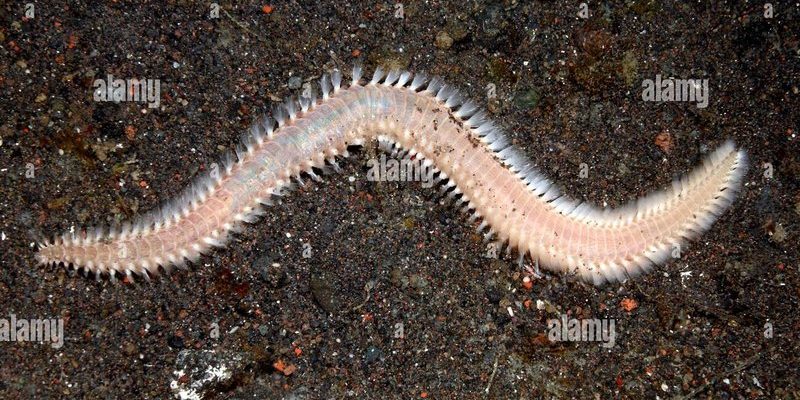
Bristle worms are fascinating marine creatures. They belong to the class Polychaeta and are usually found in sandy or muddy environments. While most folks see them as harmless, others seem to have learned the hard way that they’re not just innocent little critters. So, what’s the deal with their so-called stings? Do they actually pose a threat to us humans, or is it more of a scare than a real danger? Stick with me as we explore the truth about these intriguing animals.
What Are Bristle Worms?
Bristle worms are part of a larger group called annelids, which are segmented worms. These creatures can be found in oceans, seas, and even some freshwater environments. They come in a variety of colors and sizes, with some reaching lengths of up to 10 inches (or around 25 centimeters). Their bodies are covered in tiny, hair-like structures called **setae**—hence the name “bristle.” Imagine a brush with lots of tiny bristles; that’s what you’re dealing with here!
These worms play a vital role in their ecosystem. They help break down organic material, making nutrients available for other organisms. You might find them digging through the sand, aerating the seabed, or feasting on decomposing matter. So, while they might give you a little scare, they serve an important purpose in the marine world.
How Do Bristle Worms Defend Themselves?
You might be wondering, “If these worms are so helpful, how do they protect themselves?” Bristle worms have a few tricks up their sleeves to keep predators at bay. When threatened, they can shed tiny bristles that act like barbed arrows. These barbs can lodge into the skin of unwelcome guests—like humans! It’s like getting a tiny splinter, and it can certainly sting.
But here’s the catch: Not all bristle worms are created equal. Some species have setae that are more toxic or irritating than others. For example, the **fireworm** is notorious for its painful sting, which can cause burning sensations and skin irritations. If you accidentally touch one, it can feel like you’ve brushed against a nettle plant.
So, while they don’t bite in the traditional sense, the way they defend themselves can lead to some unpleasant encounters. It’s a bit like a porcupine; they don’t attack, but if you get too close, you might end up with a few barbs of your own!
Do Bristle Worms Have Venom?
Now, let’s tackle the big question: do bristle worms have venom? In short, the answer varies depending on the species. Most bristle worms don’t have venom in the way that a snake or spider would. Instead, their bristles can cause irritation due to the mechanical nature of their barbs.
However, some species, particularly those in the family **Amphinomidae**, do have toxins in their bristles that can lead to a more significant reaction. If you come across a fireworm and accidentally touch it, it can result in more than just a scratch; you may experience swelling or a burning sensation. The toxins can cause reactions similar to allergies for some people, which can be quite alarming!
It’s worth noting that while serious effects are rare, they can happen. If you’re out snorkeling or exploring tide pools, it’s a good idea to keep a respectful distance from these creatures. It’s always better to enjoy their beauty from afar, just like you would with other interesting (but potentially dangerous) wildlife.
What to Do If You’re Stung?
So, you’ve encountered a bristle worm and got stung. What now? First, don’t panic! The sting is usually not life-threatening, but it can be uncomfortable. Here are some steps to help you deal with it:
- Wash the area: Rinse the sting site with seawater to remove any bristles that might be stuck in your skin. Avoid freshwater as it might cause further irritation.
- Remove the bristles: If you see any bristles, use tweezers to gently pull them out. Be careful not to push them further in.
- Apply heat: A warm compress can help alleviate pain. Heat breaks down the toxins, easing discomfort.
- Take pain relievers: Over-the-counter medications like ibuprofen or acetaminophen can help manage pain and inflammation.
- Watch for reactions: Keep an eye on the sting site. If you see excessive swelling or develop an allergic reaction, it’s time to consult a healthcare professional.
Taking these steps can help minimize discomfort and ensure a quick recovery.
How to Avoid Bristle Worm Stings?
Now that you know what to do if you get stung, let’s talk about prevention. How can you enjoy your beach or snorkeling day without the worry of a bristle worm encounter? Here are some tips:
- Wear protective clothing: Lightweight wetsuits or dive skins can keep your skin safe while you explore. Think of it as armor against the ocean’s little critters!
- Be cautious when handling rocks or coral: Bristle worms like to hide in rocky crevices, so watch where you put your hands.
- Avoid touching unfamiliar creatures: If you see something you don’t recognize, it’s better to observe rather than touch.
- Learn about local marine life: Knowledge is power! Understanding the species in your area can help you know who to avoid.
By being cautious and informed, you can enjoy your time in the water without fear of bristle worms or other surprises.
Are Bristle Worms Dangerous?
It’s natural to be curious about whether bristle worms could be dangerous. While they can deliver painful “stings,” the true danger they pose is relatively low for most people. Usually, the worst that comes from an encounter is a bit of discomfort.
However, those with allergies or sensitivities might experience more serious reactions. It’s a bit like how some people can eat spicy foods without a problem, while others might need to avoid them entirely. If you have sensitive skin or a history of reactions to stings, taking extra caution around bristle worms is wise.
In the grand scheme of things, bristle worms are just one small part of the marine ecosystem. They might be a little prickly, but they play a vital role in keeping our oceans healthy. So, while they can cause a sting, they rarely pose a significant threat to most beachgoers.
In summary, bristle worms definitely have their quirks. They might be small, but they can deliver a sting that’s more than just a harmless poke. While most species are not venomous, some can cause irritation and discomfort, especially if you accidentally touch them.
Remember, it’s best to admire these creatures from a safe distance. If you do get stung, there are effective ways to relieve the pain and make your experience more comfortable. So, the next time you find yourself exploring the shore, just be mindful of where you step, and remember that nature is full of surprises—some sweet, and some a little prickly!

